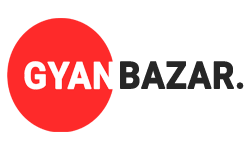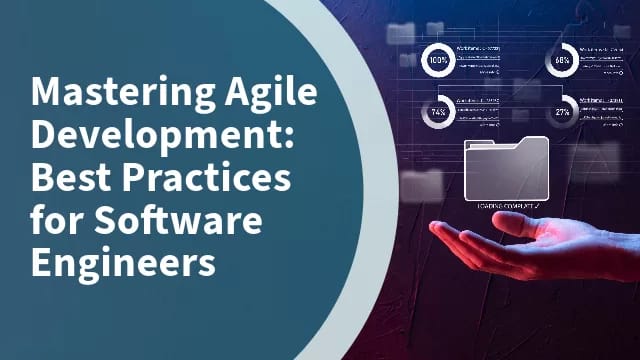Introduction
In the ever-evolving world of software development, mastering Agile methodologies is essential for staying competitive and delivering high-quality products efficiently. Agile development has revolutionized the way software engineers work, emphasizing collaboration, adaptability, and customer-centricity. In this article, we’ll delve deep into the world of Agile development and explore the best practices that can elevate your software engineering skills. Let’s embark on this journey towards becoming Agile experts.
The Agile Foundation
Agile development is not just a buzzword; it’s a mindset. To truly master it, you need to understand its foundational principles.
Embrace Customer-Centricity
Agile development places customers at the heart of the process. How can software engineers align their work with customer needs?
Agile Manifesto: The Guiding Light
Explore the Agile Manifesto and its four core values. How do these values shape the Agile approach?
Scrum, Kanban, or Lean: Which Is Right for You?
Delve into different Agile frameworks and discover which one suits your project and team best.
The Agile Development Lifecycle
Mastering Agile involves comprehending its lifecycle. Let’s break it down step by step.
Sprint Planning: Setting the Course
How to plan sprints effectively and maximize productivity throughout the development cycle?
Daily Stand-Ups: Keeping the Team in Sync
Learn the art of the daily stand-up meeting – a cornerstone of Agile communication.
Sprint Review and Retrospective: Continuous Improvement
How to analyze your sprint’s success and make improvements for the next one?
Collaboration and Communication
Effective communication and collaboration are Agile’s cornerstones. How can software engineers excel in these areas?
Cross-Functional Teams: The Powerhouses of Agile
Why diverse teams lead to innovative solutions in Agile projects.
Agile Artifacts: Visualizing Progress
Explore Agile artifacts like the burndown chart and user stories. How can they enhance project transparency?
Communication Tools for Agile Teams
Discover the best communication tools to keep your Agile team connected, even in remote setups.
Agile Best Practices
Now that we’ve laid the groundwork, let’s delve into specific Agile best practices that every software engineer should master.
Prioritizing the Product Backlog
How to prioritize tasks in the product backlog for maximum value delivery?
Test-Driven Development (TDD)
Learn how TDD can lead to more robust and bug-free code in Agile projects.
Continuous Integration and Continuous Deployment (CI/CD)
The magic of CI/CD: automating software delivery and ensuring a smooth development process.
Retrospectives: A Key to Continuous Improvement
How retrospectives foster a culture of learning and growth within Agile teams.
Quality Assurance in Agile: Everyone’s Responsibility
Why QA is not just a separate phase but an integral part of Agile development.
Agile Challenges and Solutions
Even the best Agile practitioners encounter challenges. Let’s address these issues and offer solutions.
Dealing with Scope Creep
How to prevent and manage scope creep in Agile projects?
Balancing Flexibility and Structure
Finding the right balance between Agile’s flexibility and the need for structure and predictability.
Distributed Agile Teams: Bridging the Gap
Tips for successfully managing Agile projects with team members spread across the globe.
Scaling Agile: Beyond the Basics
Exploring frameworks like SAFe and LeSS for scaling Agile to large organizations.
FAQs
Q: What is the Agile Manifesto? A: The Agile Manifesto is a set of guiding values and principles for Agile software development. It prioritizes individuals and interactions, working software, customer collaboration, and responding to change.
Q: What are the benefits of Agile development? A: Agile development promotes faster delivery, improved collaboration, adaptability to change, and a focus on customer satisfaction.
Q: How can Agile help manage project risks? A: Agile’s iterative approach allows for early identification and mitigation of risks by continuously assessing project progress and adapting accordingly.
Q: Is Agile suitable for all types of software projects? A: While Agile can be adapted to various projects, it’s most effective for those with evolving requirements and a need for frequent customer feedback.
Q: What role does a Product Owner play in Agile? A: The Product Owner is responsible for defining and prioritizing the product backlog, ensuring that the team works on the most valuable tasks.
Q: How can Agile teams handle changing requirements? A: Agile teams embrace changing requirements by using flexible frameworks and prioritizing customer feedback to adjust their work.
Conclusion
Becoming a master of Agile development is a journey that requires dedication and continuous learning. By embracing customer-centricity, understanding Agile principles, and implementing best practices, software engineers can unlock the full potential of this methodology. Agile isn’t just a development process; it’s a mindset that fosters innovation, collaboration, and excellence in software engineering. So, embark on your Agile journey today and watch your software development skills soar.

